Ars Electronica Archive – S+T+ARTS
STARTS ist eine Initiative der Europäischen Kommission mit der Technologie und künstlerische Praxis bestmöglich verbunden werden sollen. Als Teil dieser Initiative unterstützen die STARTS Residencies die zukunftsträchtigsten Kooperationen und zeichnet der STARTS Preis die beeindruckendsten Ergebnisse im Bereich Kreativität und Innovation an der Schnittstelle von Wissenschaft, Technologie und Kunst aus. STARTS wird durch verschiedene Finanzierungsmodelle der Europäischen Kommission ermöglicht.
I’m Humanity
Etsuko Yakushimaru
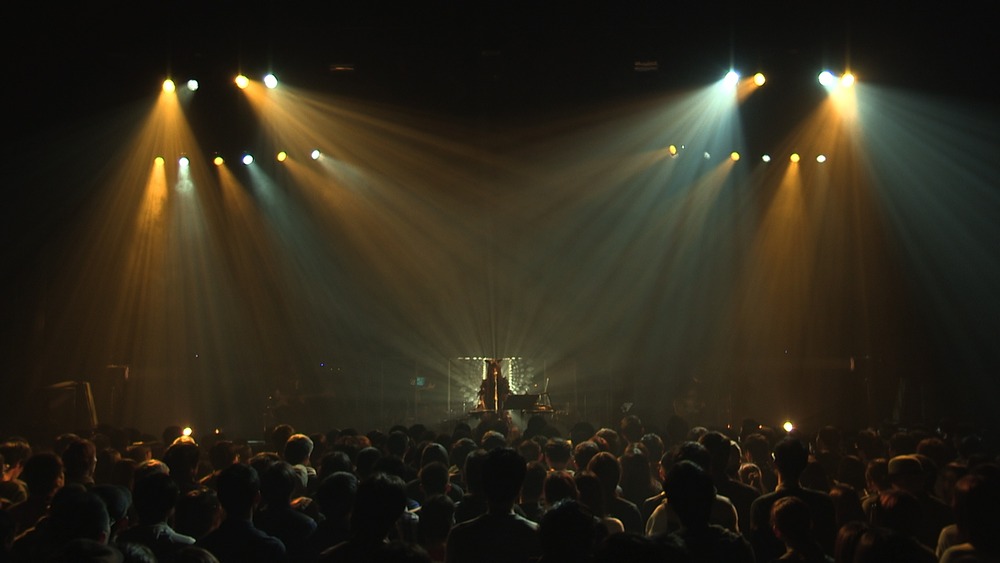
Original: IH_LiveAtYCAM1.jpg | 2000 * 1125px | 369.8 KB | “I’m Humanity” - Live performance at Yamaguchi Center for Arts and Media
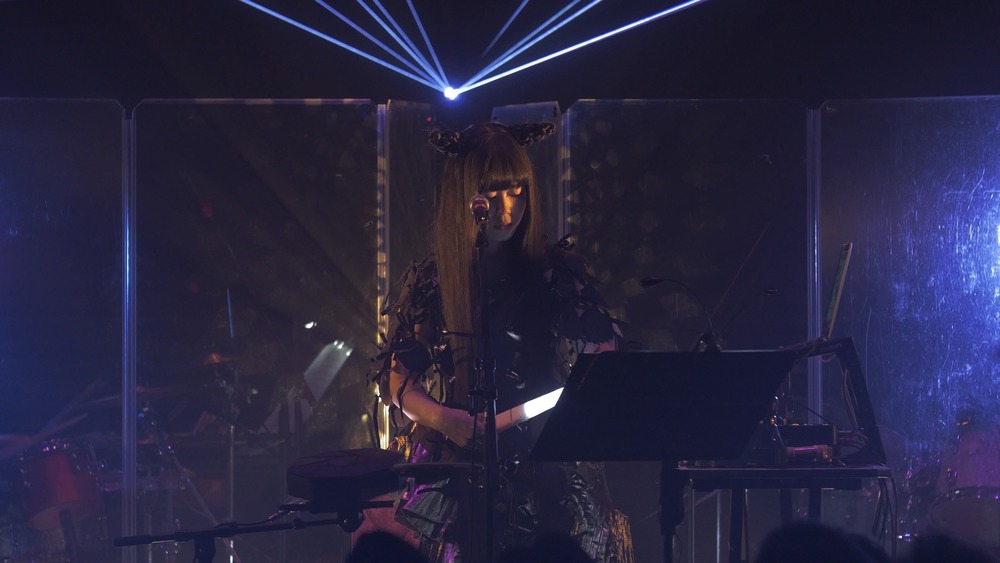
Original: IH_LiveAtYCAM4.jpg | 2000 * 1125px | 425.2 KB | “I’m Humanity” - Live performance at Yamaguchi Center for Arts and Media
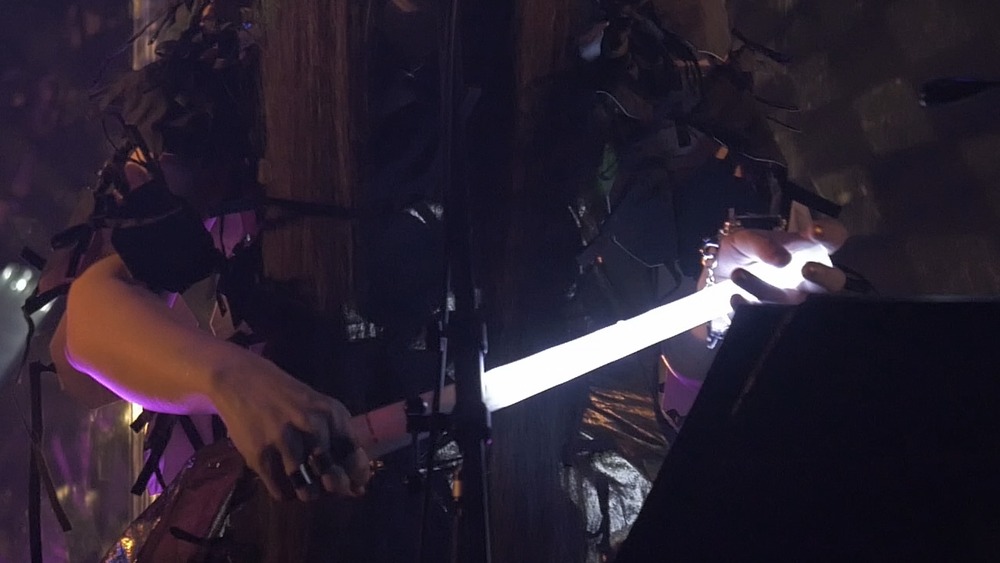
Original: IH_LiveAtYCAM6.jpg | 2000 * 1125px | 356.9 KB | “I’m Humanity” - Live performance at Yamaguchi Center for Arts and Media
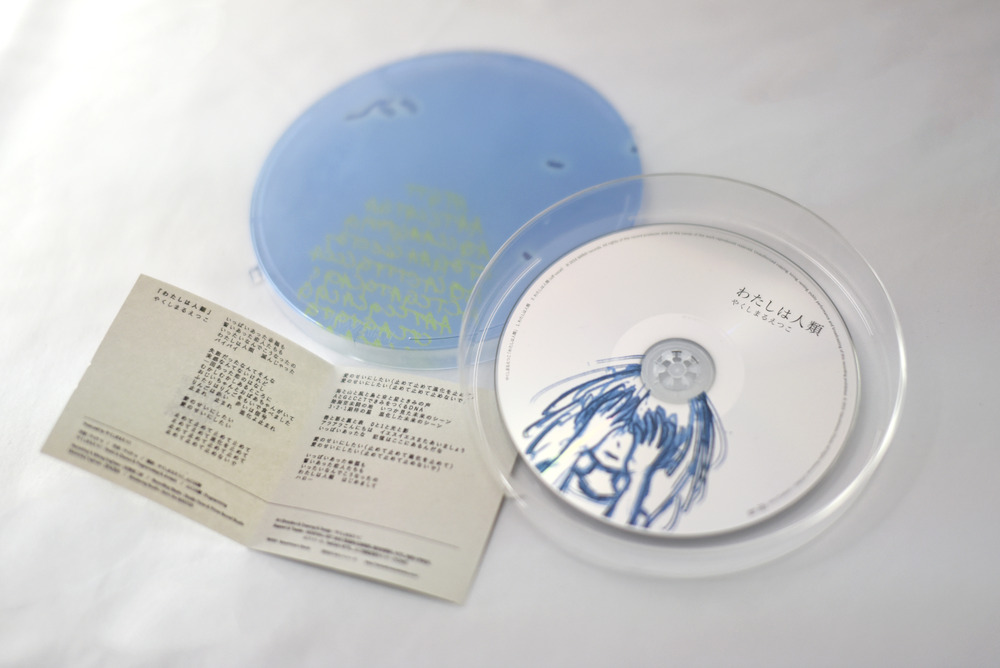
Original: ImHumanity_CD2.jpg | 5713 * 3814px | 14.9 MB | “I’m Humanity” CD artwork (CD in the UV-printed petri dish)
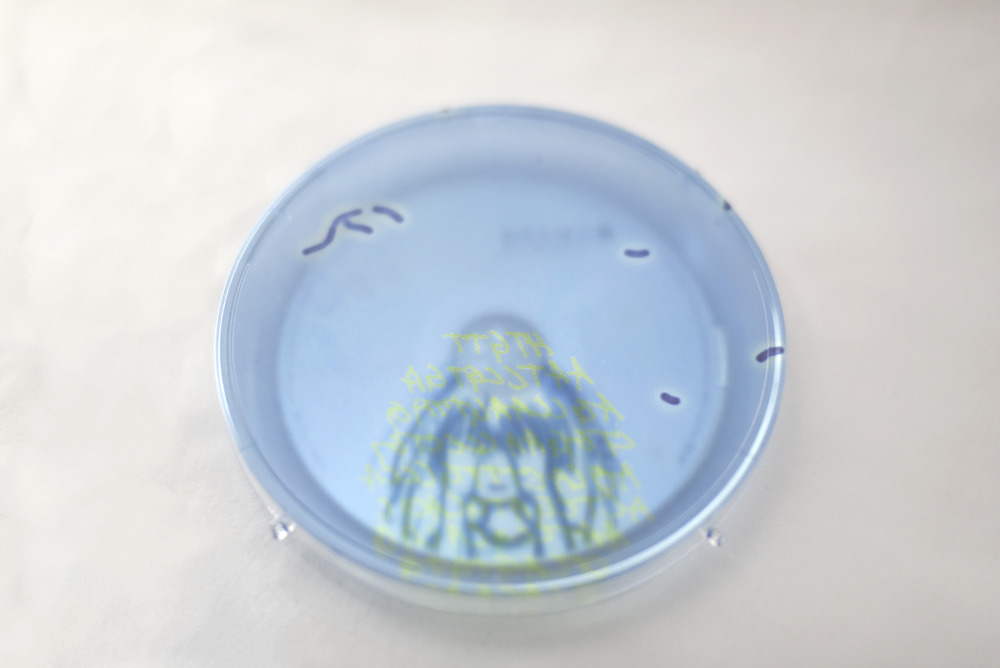
Original: ImHumanity_CD3.jpg | 6016 * 4016px | 16.4 MB | “I’m Humanity” CD artwork (CD in the UV-printed petri dish)
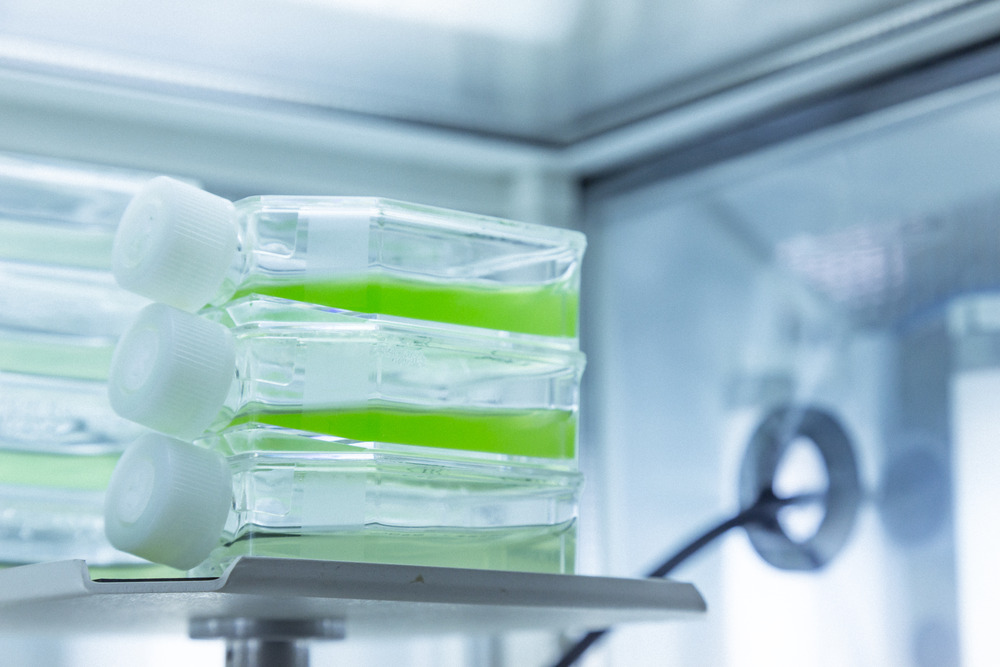
Original: ImHumanity_culture1.jpg | 5472 * 3648px | 12.0 MB | I’m Humanity” genetically-modified microorganism
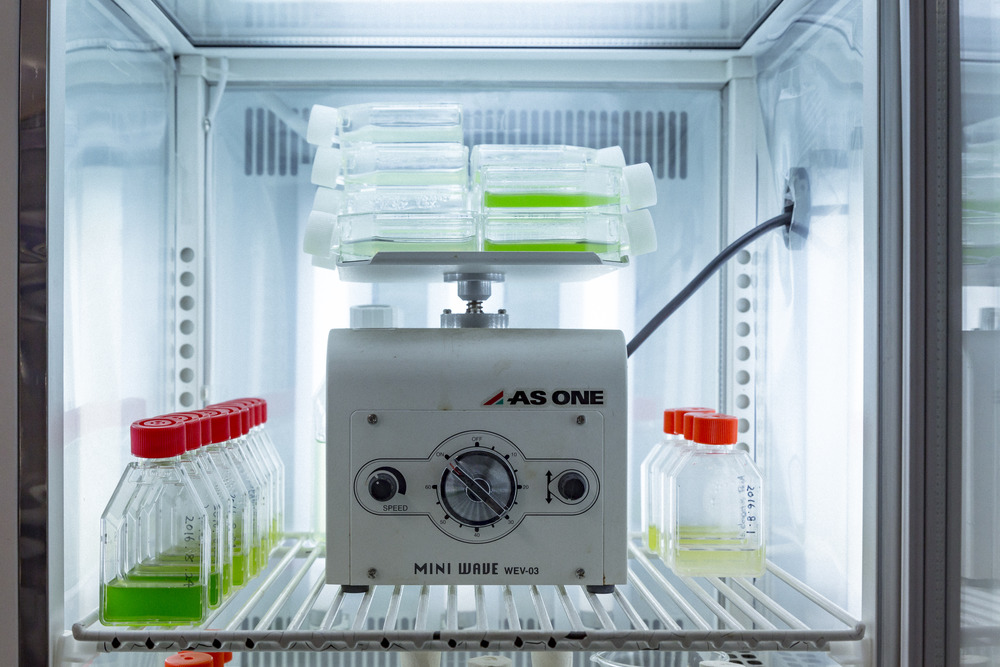
Original: ImHumanity_culture3.jpg | 5472 * 3648px | 12.5 MB | I’m Humanity” genetically-modified microorganism
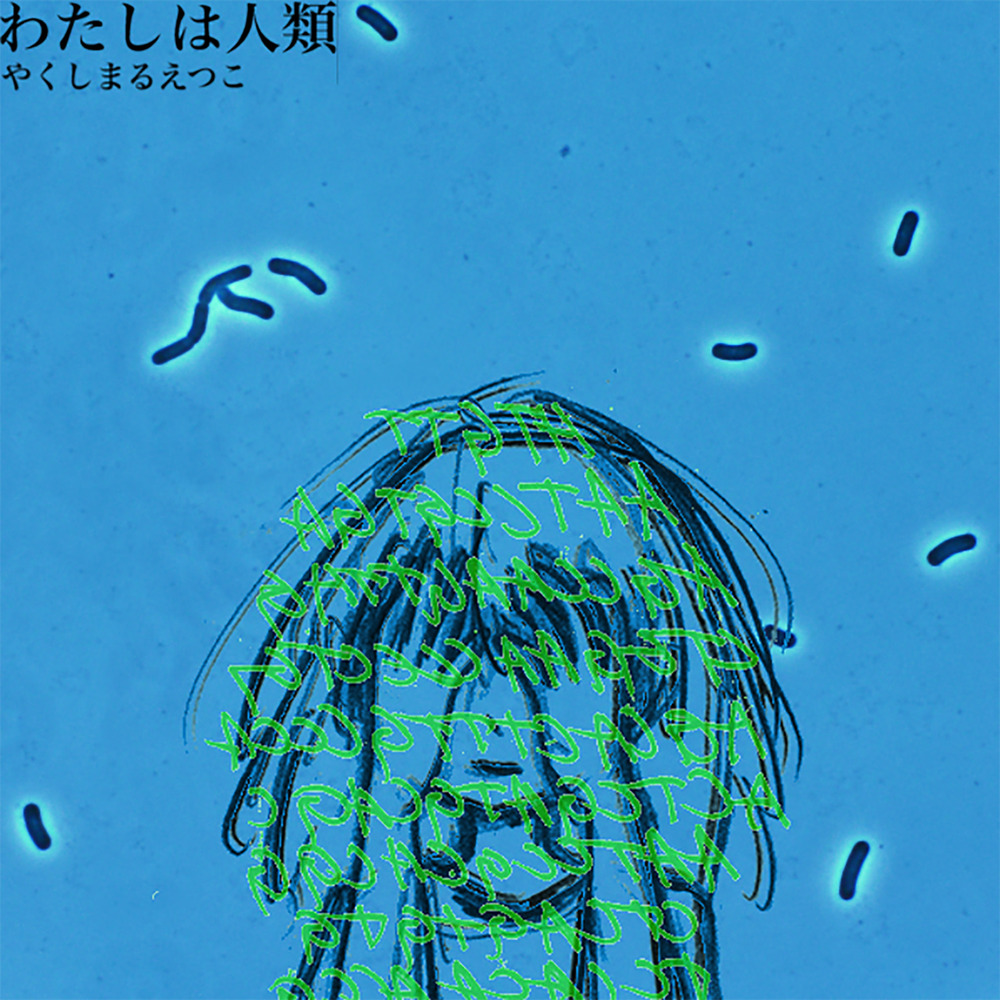
Original: ImHumanity_Digital_Artwork.jpg | 1600 * 1600px | 1.3 MB | “I’m Humanity” digital music artwork
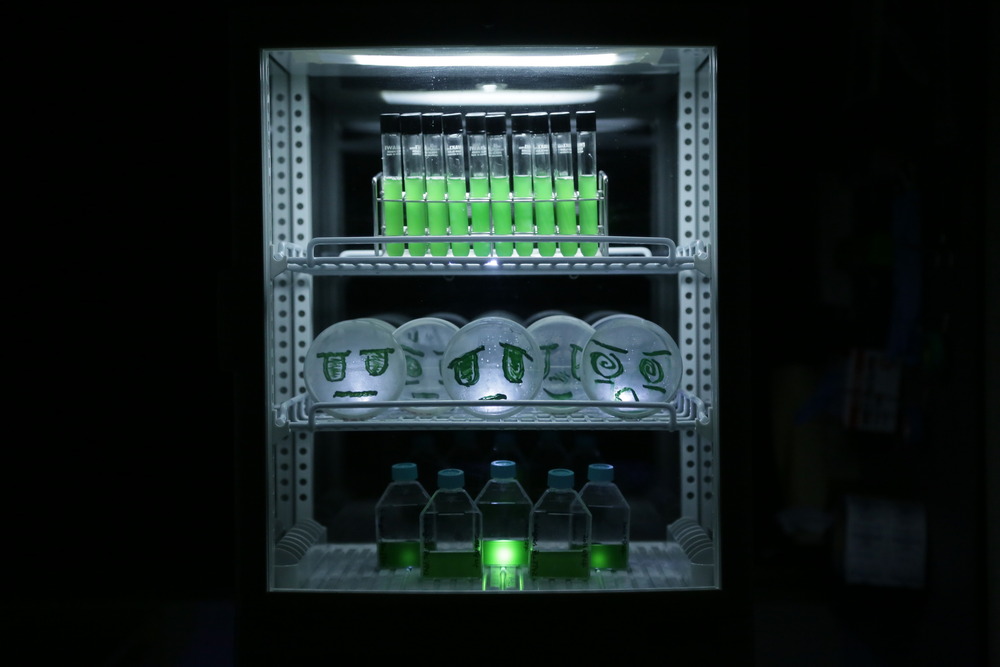
Original: ImHumanity_Ex2.JPG | 5472 * 3648px | 4.1 MB | Exhibition of “I’m Humanity” genetically-modified microorganism
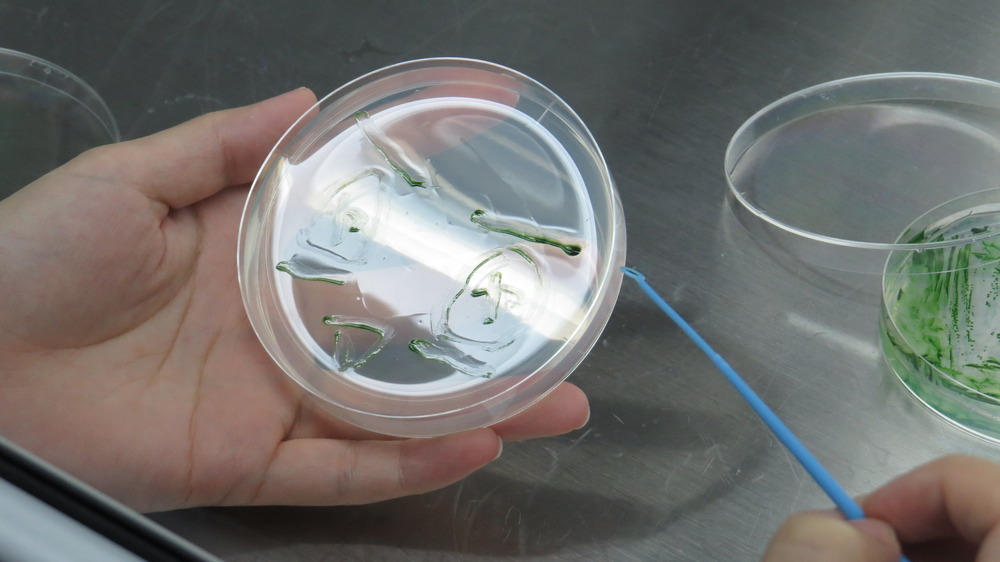
Original: ImHumanity_YXMR2.JPG | 4000 * 2248px | 2.1 MB | Etsuko Yakushimaru with “I’m Humanity” genetically-modified microorganism
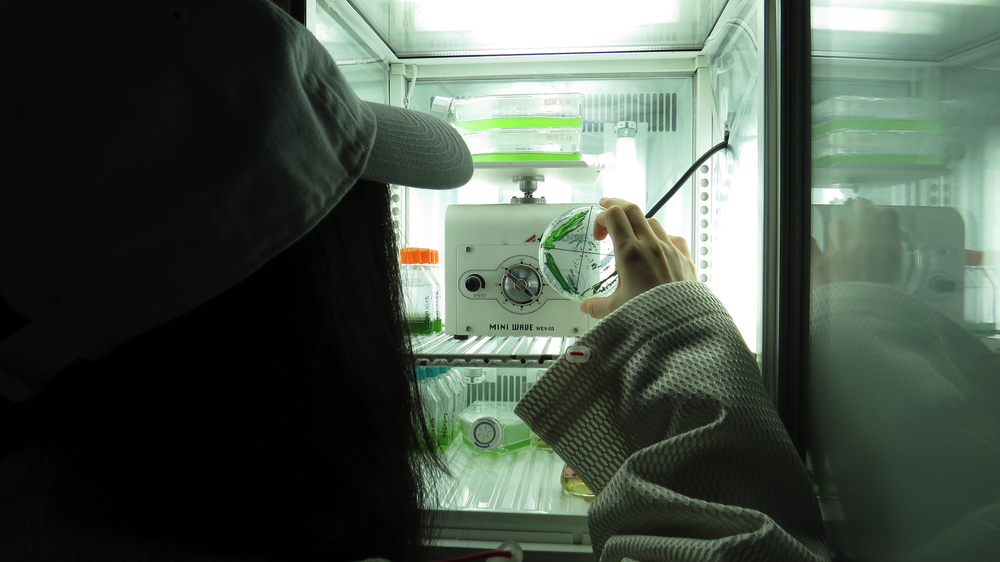
Original: ImHumanity_YXMR3.jpg | 4000 * 2248px | 5.6 MB | Etsuko Yakushimaru with “I’m Humanity” genetically-modified microorganism
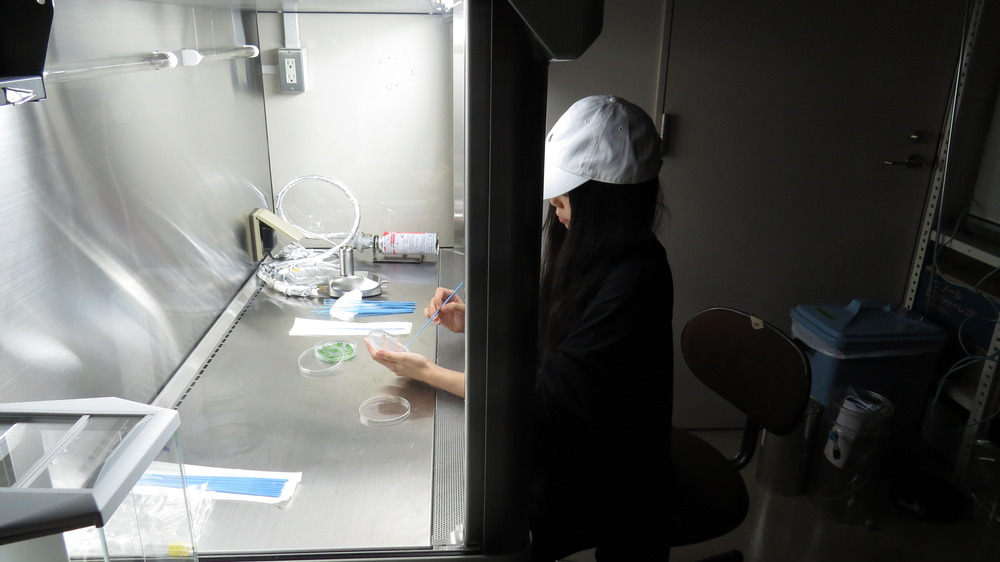
Original: ImHumanity_YXMR4.JPG | 4000 * 2248px | 1.8 MB | Etsuko Yakushimaru with “I’m Humanity” genetically-modified microorganism
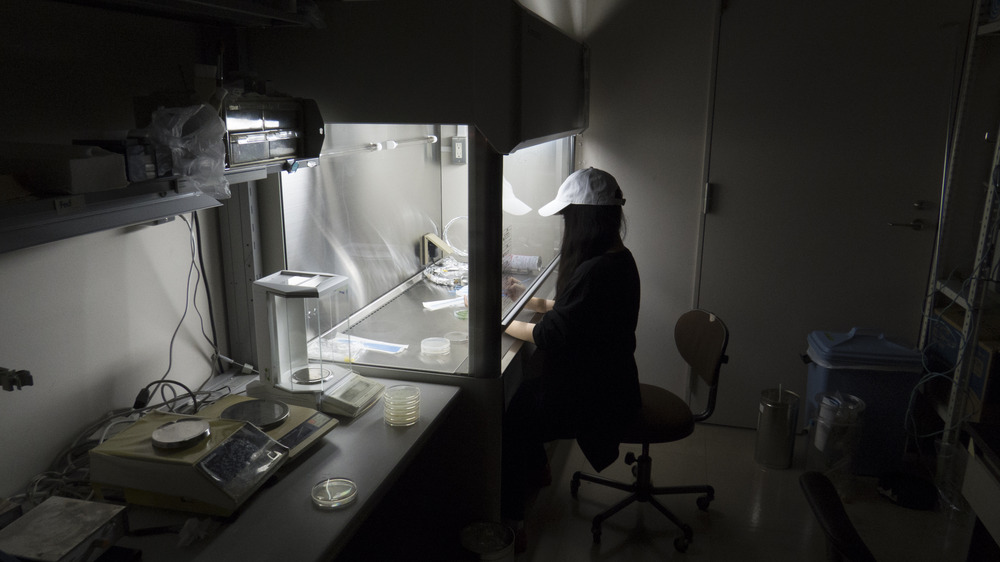
Original: ImHumanity_YXMR.jpg | 4000 * 2248px | 4.3 MB | Etsuko Yakushimaru with “I’m Humanity” genetically-modified microorganism
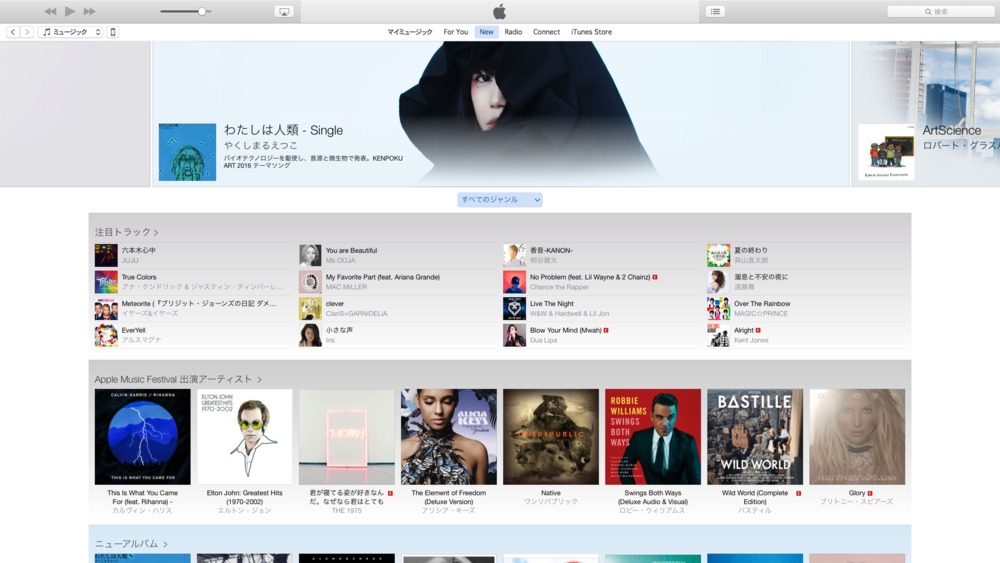
Original: iTunes_TOP_201609.png | 1920 * 1080px | 1.1 MB | “I’m Humanity” on the iTunes top page of September 2016
Das Projekt I’m Humanity basiert auf der Idee einer „posthumanitären Musik“ und erforscht, wie neue Musik gesungen oder gespielt, übertragen, aufgezeichnet und variiert sowie in der Folge als Partitur, via Radio, Schallplatten und CDs oder Cloud Computing verbreitet werden kann. Musik bewegt sich durch Zeit und Raum und verändert sich auf dieser klanglichen Reise. Die enge Beziehung zwischen Musik und Medien, zwischen Übertragung und Aufzeichnung in diesem Prozess gleicht jener zwischen den Genen und der DNA. Yakushimaru ist in vielen Genres von Popmusik bis hin zu experimenteller Musik tätig und arbeitet darüber hinaus in unterschiedlichsten künstlerischen Medien: Sie zeichnet, macht Installationen, realisiert Projekte, bei denen Satelliten und biometrische Daten zum Einsatz kommen, entwickelte einen Songs generierenden Roboter und beschäftigt sich mit Instrumentenbau.
Für das Projekt I’m Humanity komponierte Yakushimaru einen Popsong mithilfe der Nukleinsäuresequenz des Synechococcus, einer Gattung der Blaualgen (Cyanobakterien). Die musikalischen Informationen wurden in einem genetischen Code verschlüsselt, der zur Erzeugung einer langen DNA-Sequenz verwendet wurde, die drei miteinander verbundene Nukleinsäuresequenzen enthält. Die DNA wurde künstlich hergestellt und in die Chromosome des Mikroorganismus eingepflanzt. Dieser genetisch modifizierte Mikroorganismus mit Musik in seiner DNA kann sich kontinuierlich selbst replizieren. Selbst wenn die Menschheit, so wie wir sie kennen, aussterben sollte, wird er weiter leben und darauf warten, dass die Musik in seiner DNA von der Spezies, die die Menschheit ersetzt haben wird, gespielt wird.
Was die Lebensdauer von Aufnahmemedien betrifft, so halten CDs angeblich ein paar Jahrzehnte, säurefreies Papier überdauert immerhin Jahrhunderte. Die Lebensdauer der DNA beläuft sich in physikalisch-chemischer Betrachtung im Vergleich dazu auf 500.000 Jahre. Allein aufgrund ihrer langen Lebensdauer eignet sich die DNA daher ideal als Aufnahmemedium.
Allerdings kommt es des Öfteren vor, dass Nukleinsäuresequenzen mutieren, was natürlich Veränderungen der genetischen Information bewirkt. In der Geschichte der „Verbreitung von Musik“ spielte „Mutation“, Veränderung, neben der „Übertragung“ von Information eine wesentliche Rolle. Die „Mutation“ von Nukleinsäuresequenzen zeigt eine auffallende Ähnlichkeit zu diesem Vorgang.
Der Mikroorganismus I’m Humanity singt die Textzeile “Stop the evolution―don’t stop it.” Zwar treibt Mutation die Evolution an, doch impliziert dies auch, dass eine Spezies sich verändert. Vielleicht ist I’m Humanity hin- und hergerissen zwischen dem Wunsch nach Evolution und der Angst, dass diese den Verlust von Nukleinsäuresequenzen mit musikalischer Information bedeuten könnte und es I’m Humanity in der Folge unmöglich wäre, sein Lied weiter zu singen.
I’m Humanity ist der erste Song in der Geschichte der Menschheit, der in drei Formaten –digitale Musikdistribution, CD und genetisch modifizierter Mikroorganismus – erscheint. Dieser unter Einsatz von Biotechnologie produzierte Song wurde als Popmusik veröffentlicht und brachte es auch auf die Startseite von Apple Music.
Biotechnische Verfahren
In unserer DNA, die sich aus vier Nukleotid-Typen (A, C, G und T) zusammensetzt, wird jede Aminosäure von drei Nukleotiden (Triplett) kodiert. Die Translationsregeln sind in der Codon-Tabelle zusammengefasst. Auf Basis dieser Codon-Tabelle zur Anwendung für lebende Zellen wurde ein Verschlüsselungsalgorithmus kreiert, um die Musikakkorde in genetische Codes umzuwandeln. Die Akkordfolge von I’m Humanity wurde in die folgenden 276 Nukleotide umgewandelt:
I’m Humanity: 276bp; A 22; T 101; G 57; C; 96 (GC-Gehalt = 55.4%)
GGTCTTCCCCATGGTCTTCCCCATGGTCTTCCCCATGGTCTTCCCCATGGTCTTCCCCATGGTCTTCCC
CATGGTCTTCCCCATGGTCTTCCCCATTCTTCTGGAGGATCTTCTGGAGGATCTTCTTTGGGTTCTTCT
GGAGGCGGTCTTCCCCATGGTCTTCCCCATCTTCTTCTTCTTGGTGGTGGTGGTATTCTTCTTCTCGGT
GGTCCCACTGGTCTTCCCCATGGTCTTCCCCATGGTCTTCCCCATGGTCTTCCCCATGGTCTTCCCCAT
Der genetische Code wurde mithilfe eines DNA-Synthesizers automatisiert hergestellt und in einen Vektor mit der Bezeichnung pSyn_1 eingefügt. Die in das eingefügte DNA-Fragment kodierten Musikakkorde wurden mittels homologer Rekombination in das Genom einer Wirtszelle integriert (ein Cyanobakterium, Synechococcus elongatus PCC 7942). Die Musikakkorde im Synechococcus-Genom können im Zuge der Zellteilung endlos reproduziert werden.
Für das Projekt I’m Humanity komponierte Yakushimaru einen Popsong mithilfe der Nukleinsäuresequenz des Synechococcus, einer Gattung der Blaualgen (Cyanobakterien). Die musikalischen Informationen wurden in einem genetischen Code verschlüsselt, der zur Erzeugung einer langen DNA-Sequenz verwendet wurde, die drei miteinander verbundene Nukleinsäuresequenzen enthält. Die DNA wurde künstlich hergestellt und in die Chromosome des Mikroorganismus eingepflanzt. Dieser genetisch modifizierte Mikroorganismus mit Musik in seiner DNA kann sich kontinuierlich selbst replizieren. Selbst wenn die Menschheit, so wie wir sie kennen, aussterben sollte, wird er weiter leben und darauf warten, dass die Musik in seiner DNA von der Spezies, die die Menschheit ersetzt haben wird, gespielt wird.
Was die Lebensdauer von Aufnahmemedien betrifft, so halten CDs angeblich ein paar Jahrzehnte, säurefreies Papier überdauert immerhin Jahrhunderte. Die Lebensdauer der DNA beläuft sich in physikalisch-chemischer Betrachtung im Vergleich dazu auf 500.000 Jahre. Allein aufgrund ihrer langen Lebensdauer eignet sich die DNA daher ideal als Aufnahmemedium.
Allerdings kommt es des Öfteren vor, dass Nukleinsäuresequenzen mutieren, was natürlich Veränderungen der genetischen Information bewirkt. In der Geschichte der „Verbreitung von Musik“ spielte „Mutation“, Veränderung, neben der „Übertragung“ von Information eine wesentliche Rolle. Die „Mutation“ von Nukleinsäuresequenzen zeigt eine auffallende Ähnlichkeit zu diesem Vorgang.
Der Mikroorganismus I’m Humanity singt die Textzeile “Stop the evolution―don’t stop it.” Zwar treibt Mutation die Evolution an, doch impliziert dies auch, dass eine Spezies sich verändert. Vielleicht ist I’m Humanity hin- und hergerissen zwischen dem Wunsch nach Evolution und der Angst, dass diese den Verlust von Nukleinsäuresequenzen mit musikalischer Information bedeuten könnte und es I’m Humanity in der Folge unmöglich wäre, sein Lied weiter zu singen.
I’m Humanity ist der erste Song in der Geschichte der Menschheit, der in drei Formaten –digitale Musikdistribution, CD und genetisch modifizierter Mikroorganismus – erscheint. Dieser unter Einsatz von Biotechnologie produzierte Song wurde als Popmusik veröffentlicht und brachte es auch auf die Startseite von Apple Music.
Biotechnische Verfahren
In unserer DNA, die sich aus vier Nukleotid-Typen (A, C, G und T) zusammensetzt, wird jede Aminosäure von drei Nukleotiden (Triplett) kodiert. Die Translationsregeln sind in der Codon-Tabelle zusammengefasst. Auf Basis dieser Codon-Tabelle zur Anwendung für lebende Zellen wurde ein Verschlüsselungsalgorithmus kreiert, um die Musikakkorde in genetische Codes umzuwandeln. Die Akkordfolge von I’m Humanity wurde in die folgenden 276 Nukleotide umgewandelt:
I’m Humanity: 276bp; A 22; T 101; G 57; C; 96 (GC-Gehalt = 55.4%)
GGTCTTCCCCATGGTCTTCCCCATGGTCTTCCCCATGGTCTTCCCCATGGTCTTCCCCATGGTCTTCCC
CATGGTCTTCCCCATGGTCTTCCCCATTCTTCTGGAGGATCTTCTGGAGGATCTTCTTTGGGTTCTTCT
GGAGGCGGTCTTCCCCATGGTCTTCCCCATCTTCTTCTTCTTGGTGGTGGTGGTATTCTTCTTCTCGGT
GGTCCCACTGGTCTTCCCCATGGTCTTCCCCATGGTCTTCCCCATGGTCTTCCCCATGGTCTTCCCCAT
Der genetische Code wurde mithilfe eines DNA-Synthesizers automatisiert hergestellt und in einen Vektor mit der Bezeichnung pSyn_1 eingefügt. Die in das eingefügte DNA-Fragment kodierten Musikakkorde wurden mittels homologer Rekombination in das Genom einer Wirtszelle integriert (ein Cyanobakterium, Synechococcus elongatus PCC 7942). Die Musikakkorde im Synechococcus-Genom können im Zuge der Zellteilung endlos reproduziert werden.
l’m Humanity produced and directed by Etsuko Yakushimaru
Lyrics: Tica Alpha (a.k.a Etsuko Yakushimaru)
Music: Tica Alpha (a.k.a Etsuko Yakushimaru)
Genetic Codes: Etsuko Yakushimaru
Art Direction & Drawing & Design: Etsuko Yakushimaru
(C) 2016 Yakushimaru Etsuko
Musical arrangement: Etsuko Yakushimaru, Motoki Yamaguchi
Vocal & Chorus & Programming & dimtakt: Etsuko Yakushimaru
Drums & Programming: Motoki Yamaguchi
Recording & Mixing Engineer: Yujiro Yonetsu
Mastering Engineer: Shigeo Miyamoto
Technical Support: Satoshi Hanada
Photograph & Movie: MIRAI seisaku / Photograph(Compact Disc): Satomi Haraguchi
Label: MIRAI records
(P) MIRAI records
Support & Thanks: KENPOKU ART 2016, METI Ministry of Economy, Trade and lndustry., National Institute of Technology and Evaluation (NITE), Satoshi Hanada, Tokyo Metropolitan University, FabCafe MTRL, Yamaguchi Center for Arts and Media [YCAM]
*Apple Music is a trademark of Apple Inc., registered in the U.S. and other countries.
Lyrics: Tica Alpha (a.k.a Etsuko Yakushimaru)
Music: Tica Alpha (a.k.a Etsuko Yakushimaru)
Genetic Codes: Etsuko Yakushimaru
Art Direction & Drawing & Design: Etsuko Yakushimaru
(C) 2016 Yakushimaru Etsuko
Musical arrangement: Etsuko Yakushimaru, Motoki Yamaguchi
Vocal & Chorus & Programming & dimtakt: Etsuko Yakushimaru
Drums & Programming: Motoki Yamaguchi
Recording & Mixing Engineer: Yujiro Yonetsu
Mastering Engineer: Shigeo Miyamoto
Technical Support: Satoshi Hanada
Photograph & Movie: MIRAI seisaku / Photograph(Compact Disc): Satomi Haraguchi
Label: MIRAI records
(P) MIRAI records
Support & Thanks: KENPOKU ART 2016, METI Ministry of Economy, Trade and lndustry., National Institute of Technology and Evaluation (NITE), Satoshi Hanada, Tokyo Metropolitan University, FabCafe MTRL, Yamaguchi Center for Arts and Media [YCAM]
*Apple Music is a trademark of Apple Inc., registered in the U.S. and other countries.
Etsuko Yakushimaru (JP) ist Künstlerin, Musikerin, Produzentin, Texterin, Komponistin, Arrangeurin und Sängerin. Ihr vielseitiges Repertoire reicht von Popmusik bis hin zu experimenteller Musik und Kunst. In ihren weitreichenden künstlerischen Aktivitäten, zu denen auch Zeichnen, Installationskunst, Medienkunst, Poesie und andere literarische Gattungen sowie Rezitation zählen, widersetzt sie sich jeder Vereinnahmung. Sie realisiert zahlreiche Projekte und fördert andere KünstlerInnen, etwa mit ihrer Band Soutaiseiriron. Yakushimaru ist mit zahlreichen Hits in den Musikcharts vertreten, machte sich aber auch mit Projekten, die den Einsatz von Satelliten, biologischen Daten und Biotechnologie involvierten, einem Songs generierenden Roboter, der mit künstlicher Intelligenz und ihrer eigenen Stimme ausgestattet ist, einem unabhängig entwickelten KR-System und elektronischen Musikinstrumenten einen Namen. In jüngerer Zeit hatte sie mehrere Ausstellungen, u.a. im Mari Art Museum, im Toyota Municipal Museum of Art, beim Festival KENPOKU ART 2016 und im Yamaguchi Center for Arts and Media [YCAM]. Ihre Alben Tensei Jingle sowie Flying Tentacles, die beide 2016 herauskamen, wurden von renommierten Kollegen wie Ryuichi Sakamoto, Jeff Mills, Fennesz, Penguin Cafe, Kiyoshi Kurosawa und Toh EnJoe hochgelobt.
Ars Electronica Linz GmbH & Co KG Ars-Electronica-Straße 1 4040 Linz Austria
Tel. 0043.732.7272.0 Fax. 0043.732.7272.2 Email: info@ars.electronica.art
Tel. 0043.732.7272.0 Fax. 0043.732.7272.2 Email: info@ars.electronica.art
This project has received funding from the European Union’s Horizon 2020 research and innovation programme under grant agreement No 732019.

All Rights Reserved, 2022
Copyright
Copyright
